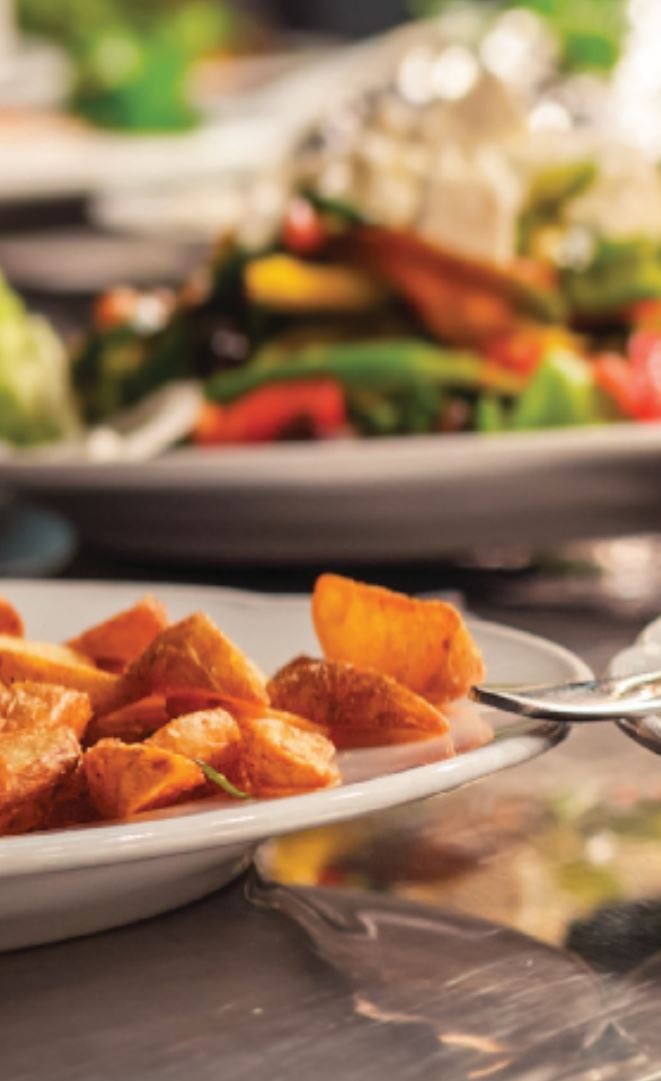Whether it’s on a big table full of burgers or in an intimate setting lit by candle lights, the restaurant experience is a special one - but not if you feel something slimy under your feet.
Or worse, take a bite of your leg of lamb and see a leg of cockroach in the gravy.
A survey conducted online by Harris Poll in 2016 found that 93 percent of adults in the United States would avoid entering an establishment again if they previously experienced some type of flaw with the facility. This includes common issues related to restaurant cleanliness, such as general bad odor, dirty restrooms, and filthy surfaces.
You don’t have to put up with these, however. Have a seat and take time to digest these five tips so you can keep your restaurant clean and in apple-pie order to avoid negative customer reviews.
Restaurant Cleaning Tip #1: Train Staff to Prioritize Food Safety
In a restaurant, you have several pairs of hands handling food, from chefs and servers to bussers and dishwashers. Educating and training all of them in proper hygiene, food safety, and restaurant cleanliness is key to making your establishment perform well not only in customers’ eyes but in health department inspections as well.
Keep in mind that it’s not enough for your business to set high standards for food safety and quality if you have staff that does not ascribe to these values. Proper training will ensure that employees fit in with your restaurant’s culture and cleanliness becomes second nature to your staff in all of their tasks.
And how do you make sure each member of your staff applies what they have learned in training to their tasks? You need to follow up when it comes to the food safety standards you have put in place. It’s important to see that everyone is doing things the way they should be done every day, not just the days immediately after a training session.
Restaurant Cleaning Tip #2: The Health Department is Your Friend, Financially
Think of the Health Department as a friend that can help you bring business in.
Many restaurants shudder at the thought of a safety inspection by the Health Department (or whichever department is in charge of restaurant inspections) because they know if they get a bad inspection grade, it could cost their business thousands of dollars in lost sales.
Don’t wait for that to happen before setting the bar on food safety.
If you do receive low marks, respond constructively and cooperate fully with authorities so you can have a strict food safety management system in place. Think of the Health Department as a friend that can help you bring business in.
Restaurant Cleaning Tip #3: Keep It Healthy
Dear Restaurateurs,
If the aforementioned leg of roach isn’t part of your menu or interior decor, make sure to keep your restaurant pest-free by calling in the professionals from pest control.
What crawls in the kitchen always makes its way out.
The other pests that are serious problems when it comes to restaurant cleanliness are rodents and flies. The presence of these pests makes the entire experience unappealing to customers, who would likely storm out and leave negative reviews that discourage other customers from going in.
And when health inspectors check the facility or receive reports of pests, they can have your restaurant closed down because of sanitation and food safety issues.
Let's look at example so you can understand how serious this is.
In South Florida, a record of 12 restaurants were ordered shut in one week in January 2016. They were only allowed to re-open after cleanups and re-inspections by the Florida Department of Business and Professional Regulation, which handles the licensing and inspection of restaurants.
All of the 12 restaurants had pest-related violations, particularly roach activity. In one restaurant on North Miami Beach, state inspectors found up to 75 live roaches in the kitchen - underneath tables used for food preparation, in wall cracks, inside the reach-in cooler and freezer gaskets, under the dish machine table, and on walls and floors.
They also found roach droppings inside the cooler and freezer gaskets, and all throughout the kitchen walls.
The presence of roaches was the number one violation among these restaurants, but other pest activity was also noted. Rodent activity was evidenced by droppings, and inspectors also found flying insects in the food preparation and storage areas and server stations.
Inspectors also found food residue in coolers as well as dirty and greasy equipment and food-contact surfaces - and as you know, all of these contribute to the proliferation of pests. If that doesn’t make you cringe, aside from pest problems, inspectors also noted the accumulation of a mold-like substance in the ice machine, insecticides stored near cooking equipment, and poor employee hygiene.
No wonder those restaurants were shut down!
Restaurant Cleaning Tip #4: Customers Should Come Hungry and Leave Healthy
The outbreak of food-related diseases such as E. coli infections has affected the reputation and operations of many restaurants in the United States, such as Taco Bell and Chipotle. One of the main reasons behind such is contaminated food, particularly undercooked meat and raw fruits and vegetables.
Foodborne illness can be attributed to bacteria, which can multiply quickly when food is kept at what is considered to be an unsafe temperature: above 41 degrees and below 140 degrees Fahrenheit.
Bacteria can also produce toxins that make food unsafe for consumption.
The factors that can contribute to foodborne illnesses in a restaurant include:
- Improper washing of hands (including fingernails)
- Poor storage of food items
- Cross-contamination (toxins from uncooked meat can be transferred to vegetables used in salads)
- Improperly cleaned cooking equipment and eating utensils
- Contamination of work areas, equipment, utensils
- Food from cockroaches, flies, and other restaurant pests
- coli contamination, norovirus infection, and food poisoning are some of the critical food safety issues that you must avoid at all costs. Make sure all of your surfaces are sanitized and food is properly prepared to ensure customers leave your restaurant full and satisfied, not nauseous and in need of hospitalization.
Restaurant Cleaning Tip #5: Restaurant Cleanliness Trumps Customer Service
Know that in some cases, customers would rather tolerate bad customer service than dine at a dirty restaurant. So make sure you give customers the best not only in terms of food, service, and ambiance, but most importantly in restaurant cleanliness.
To sum up, in order to maintain restaurant cleanliness and get the thumbs-up from food safety inspectors and customers alike, always be consistent in your sanitation practices through proper employee training and follow-up. By doing so, you avoid food-related illnesses, keep those pests away, and ultimately get those rave reviews.
What Now?
Restaurant cleanliness begins with proper staff training. If you're worried about your employees not following through on their restaurant cleaning duties, download a free copy of Toast’s Restaurant Employee Handbook Template and make your procedures clear from the day someone is hired.
Source: Erika Anne Ledesma for Toast


